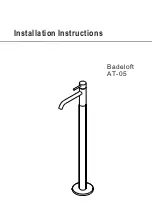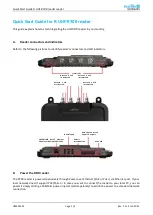
6-18
1/19/05
ATM Services Configuration Guide for CBX 3500, CBX 500, GX 550, and B-STDX 9000
Frequently Asked Questions About the FCP
Beta Draft Confidential
To enable a quick response when momentary network congestion is detected, the FCP
throttles back each active circuit instantaneously so that the available NRT bandwidth
is equally shared, regardless of the Quality of Service (QoS) class or traffic parameters
configured on the circuit. When the congestion passes, the FCP immediately returns
the circuits to their previous rates. If the congestion persists for an extended period
(16K RM processing intervals - 100 msec), the PCM sets a throttle bit that signals the
FCP to adjust the circuit rates to their fair bandwidth values.
Why does the EPD option only work when enabled for
all circuit connections?
A VC will enter into an EPD state only if both local and global buffering resources
have been utilized. The buffer space between the Global Discard and Global CLP0+1
thresholds allows the VCs on a port to continue to queue cells after the Global Discard
threshold is exceeded. Cells are queued according to the following principles:
•
If the VC has the EPD discard option enabled, every other frame is discarded, and
cells from the current packet are queued. No further increase in the global queue
length takes place.
•
If the VC has the CLP1 discard option enabled, queuing continues until the Global
CLP0+1 threshold is reached, and further cells are discarded. Since the CLP0+1
check is performed first, all cells from active congested circuits are discarded
when the threshold is reached.
Lucent recommends that all VCs be set to either the EPD or CLP0+1 discard options,
but not both. See
for more information about the
FCP queuing mechanism.
Содержание CBX 3500
Страница 888: ......
















































